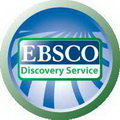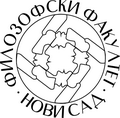ÁTMENET AZ INKLÚZIÓ KONTEXTUSÁBAN A SZÜLŐK SZEMSZÖGÉBŐL
Apstrakt
Azok a gyermekek, akik fejlődési nehézségekkel vagy zavarokkal élnek, sérültek, hátrányos helyzetűek vagy kiváló tehetséggel rendelkeznek, ők is ugyanolyan emberek, mint mindannyian. Ezek a különleges gyermekek különleges bánásmódot igényelnek a nevelés és oktatás folyamatában. Az inklúzió minden gyermek számára minőségi okta- tást jelent, amely a saját természetes környezetében valósul meg. Így a sebezhető cso- portba tartozó gyermekek egyaránt a többségi óvodákba és iskolákba járhatnak. Min- den gyermek érdeke, hogy a szülők és a pedagógusok közöttpartneri viszony alakuljon ki az oktatás folyamatában, különösen az inklúzió kontextusában. A gyermekek/tanu- lók áthaladását az oktatási rendszer szintjein, vagyis az alrendszerek közötti átlépést, átmenetnek (tranzíciónak) nevezzük. A különleges bánásmódot igénylő gyermekek szá- mára fontos, hogy folytatódjon az inkluzív oktatásuk az oktatási rendszeren keresztül. Ez a kutatási munka akülönleges gyermekek átmeneti időszakát és folyamatát közelíti meg aszülők szemszögéből, kiemelve a gyakorlatban lévő jó példákat és a nehézsége- ket is, amelyeket szükséges megoldani a sikeres és zökkenőmentesebb átmenetkhez.
Reference
Cambell-McBride, N. (2010). Sindrom psihologije creva. Beograd: Klasa.
Chesterton, K. (2010). In: Embracing Diversity: Toolkit for Creating Inclusive, Lear- ning-Friendly Environments. Kabul: Unesco.
Halász, G. (2001). Oktatási rendszer. Budapest: Műszaki Könyvkiadó. Elérhető a 20. 12. 2017. http://halaszg.ofi.hu/download/Oktatasi%20rendszer%20-%20 HTML.htm
Jensen, J. (2000). Različiti mozgovi, različit iučenici. Zagreb: Eeduca.
Nikolić, G., Lukić, M. i Janković, V. (2010). Statističnjak i informator: Učenici sa smetnjama i teškoćama u razvoju u osnovnim školama u Republici Srbiji. Beograd: ZUOV.
Pavlović-Breneselović, D. i Pavlovski, T. (2000). Partnerski odnos u vaspitanju. Beograd: Institut za pedagogiju i andragogiju Filozofskog fakulteta.
Sears, B. (2017). New reportshows 1 in 36 U.S. children has an autismdiagnosis: Nowwillpeoplecare? 20. 12. 2017. https://tacanowblog.com/2017/12/05/new- report-shows-1-in-36-u-s-children-has-an-autism-diagnosis-now-will-people- care/
Tamásné, M. (2012). A családközpontú korai intervenció. Pécs: ANK Egységes Peda- gógiai Szakszolgálat.
Törvény Az Oktatási És Nevelési Rendszer Alapjairól (Az SZK Hivatalos Közlönye, 72/2009., 52/2011., 55/2013., 68/2015. és 88/2017. szám)
Velišek Braško, O. (2015). Inkluzivna pedagogija. Novi Sad: Graphic.
Velišek Braško, O., i Beljanski, M. (2016). Tranzicija deteta iz spektra autizma u inkluzivnomo brazovanju. Pedagoška stvarnost, br. 1, vol. 62, pp, 170-183.
Velišek Braško, O., i Perić Prkosovački, B. (2017). Osnaživanje pedagoškog kadra za tranziciju dece u inkluzivnom obrazovanju. Inovacija u nastavi, br. 2, vol. 30, pp 128-140.
Viček, A. (2007): Individualizacija i inkluzivni pristup. Novi Sad: Pedagoški zavod Vojvodine.
Zablotsky, B., Black, L. & Blumberg, S. (2017). Estimated Prevalence of Children With Diagnosed Developmental Disabilitiesinthe United States, 2014–2016. NCHS Data Brief, No. 291, 1-8. https://www.cdc.gov/nchs/data/databriefs/db291.pdf







